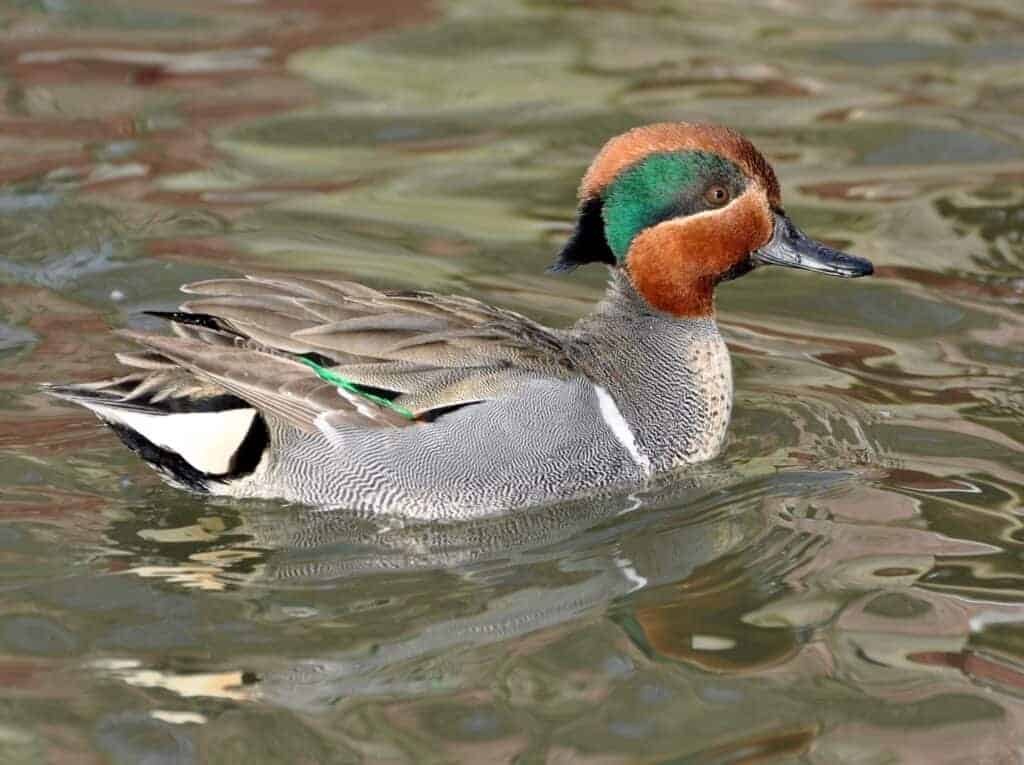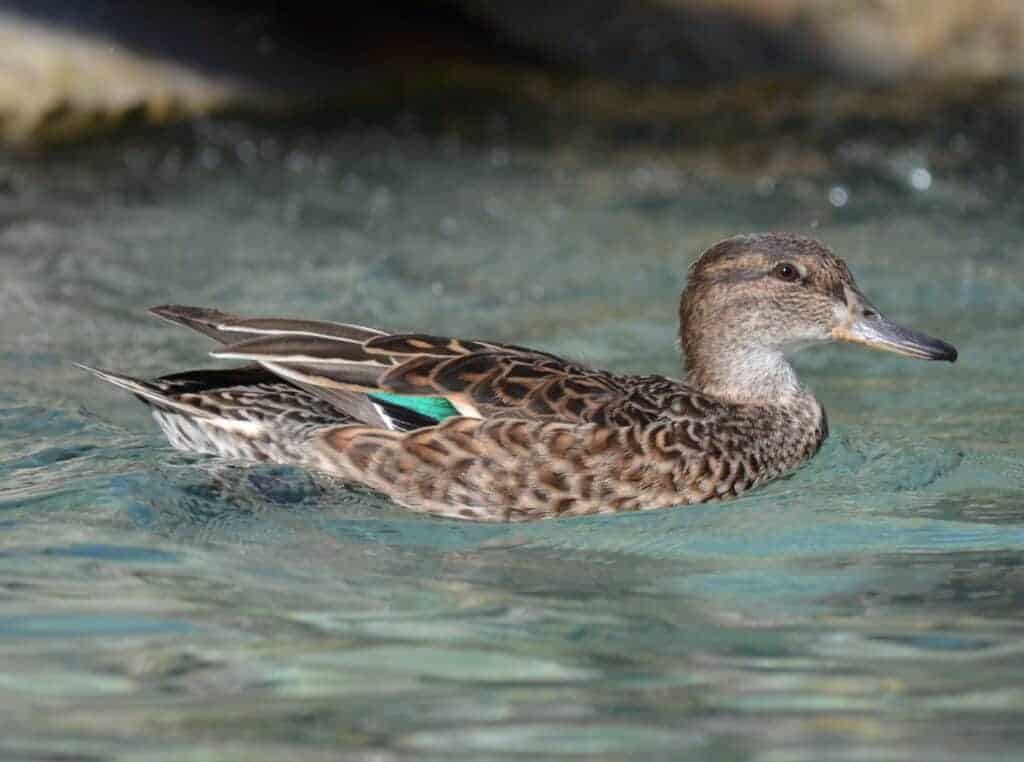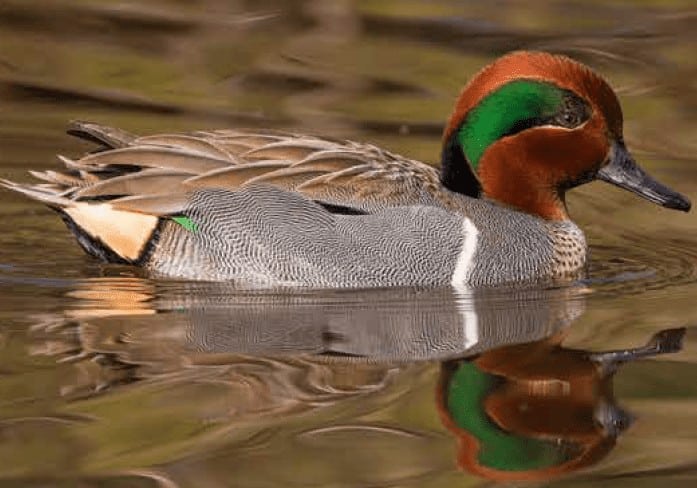Green-winged Teal


Anas carolinensis
As many waterfowl disperse over great distances, it is not surprising that we sometimes see vagrants; so the Green-winged Teal does turn up occasionally in the United Kingdom. The vertical white line on the flanks of the drake makes it stand out from the Eurasian Teal Anas crecca, which have a more uniform breast.
Adult birds have a dark grey bill, but in their first year there is more yellow/orange present on the sides. Ducks often have darker spots on the bill, which get larger with age.
The potential for hybridisation with their European cousins is high, so the two species should be kept separately. Uncovered aviaries are a potential for visiting hybridisers, particularly for collections that are close to freshwater marshes, wet moors and heaths. Caution is advised when sourcing stock.
Some report that the Green-winged Teal breed more readily than Eurasian. For many years both were considered tricky to breed.

Although superficially similar, the Eurasian Teal is a distinct species. DNA studies in the late 1990s revealed the approximate division between the two is at the Bering Sea. Closely related, but quite different in appearance, is the Yellow-billed Teal Anas flavirostris of South America. The same DNA studies showed that they are descended from the Green-winged Teal.
Green-winged Teal lay a clutch of 6-9 cream or pale olive-buff eggs. The duck makes a scrape and adds plant material pulled in from around the nest as the clutch progresses. She plucks down to cover the eggs as the last ones are laid. Incubation is relatively short, at 20-23 days.
In the breeding season, the drake defends his mate from copulation attempts by other males, but deserts the female once incubation starts.
FURTHER READING
Focus on Green-winged Teal identification in the field (UK), BirdGuides.